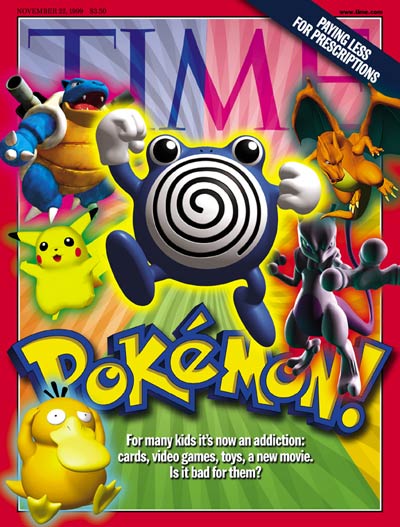
On Feb. 27, 1996, a trio of quirky creatures crept out of Japanese designer Satoshi Tajiri’s head and onto Nintendo’s crazy popular Game Boy: Bulbasaur, Squirrel and Charmander became the first of development studio Game Freak’s exotic monster-pets you had to catch, then train to do your bidding in disarmingly cute, tactically intricate battles.
In the two decades since, the Pokémon series has soared to become second in record-holding franchise sales only to games starring Nintendo’s indefatigable mustachioed plumber, Mario. And it’s still going strong, poised to finally land on smartphones and tablets later this year with Pokémon GO, an augmented reality game about deploying players to hunt Pokémon in the real world, and a critical part of Nintendo’s delayed foray into the wild and wooly mobile-verse.
In 1999, a TIME cover story explained how the whole thing started:
During the six years it took Tajiri to finish Pokémon, GameFreak nearly went broke. For several months, he barely had enough money to pay his employees. Five people quit when he told them how dire the financial conditions were. Tajiri didn’t pay himself, but lived off his father. Perhaps the tensions were creative. Explaining his goal, Tajiri says, “The important thing was that the monsters had to be small and controllable. They came in a capsule, like a monster within yourself, like fear or anger.”
However, by the time Tajiri was done with Pokémon in 1996, Game Boy technology was yesterday’s news. “No magazine or TV show was interested. They thought Game Boy was finished,” says Masakazu Kubo, executive producer of the publishing company Shogakukan Inc. “No toymakers were interested either.” Spiffier graphics and more intricate games were going to be available on CD-ROM for use on home computers, leaving the tiny images on Game Boy in the dust. “When I finished Pokémon,” says Tajiri, “I thought Nintendo would reject it. I was like a baseball player sliding into second base knowing he’s going to be out. But somehow, I was safe.”
Nintendo released the game but did not expect much from it. However, while the big electronic companies were giving up on Game Boy, Japanese boys were not. For them the games in the old technology were still affordable; the flashier and high-tech new models were out of reach. Kubo’s publishing company did the math and decided to back Pokémon, coming out with a line of comic books that included the first trading cards as giveaways. While best-selling games like Final Fantasy grabbed the top slot for a couple of dramatic months and then faded, Pokémon sales grew slowly and steadily—and they did not stop.
Read the rest of the story here, in the TIME Vault: Beware of the Poké-mania
More Must-Reads from TIME
- Donald Trump Is TIME's 2024 Person of the Year
- Why We Chose Trump as Person of the Year
- Is Intermittent Fasting Good or Bad for You?
- The 100 Must-Read Books of 2024
- The 20 Best Christmas TV Episodes
- Column: If Optimism Feels Ridiculous Now, Try Hope
- The Future of Climate Action Is Trade Policy
- Merle Bombardieri Is Helping People Make the Baby Decision
Write to Matt Peckham at matt.peckham@time.com